
Parts of Glasses: An Essential Guide to Eyewear Components
Posted by Team Debby on 3rd Dec 2023
Glasses, often seen as a reflection of personal style, serve a critical function in many people’s lives. They enhance vision and protect eyes from various elements. The intricate design of modern eyewear is the culmination of centuries of innovation.
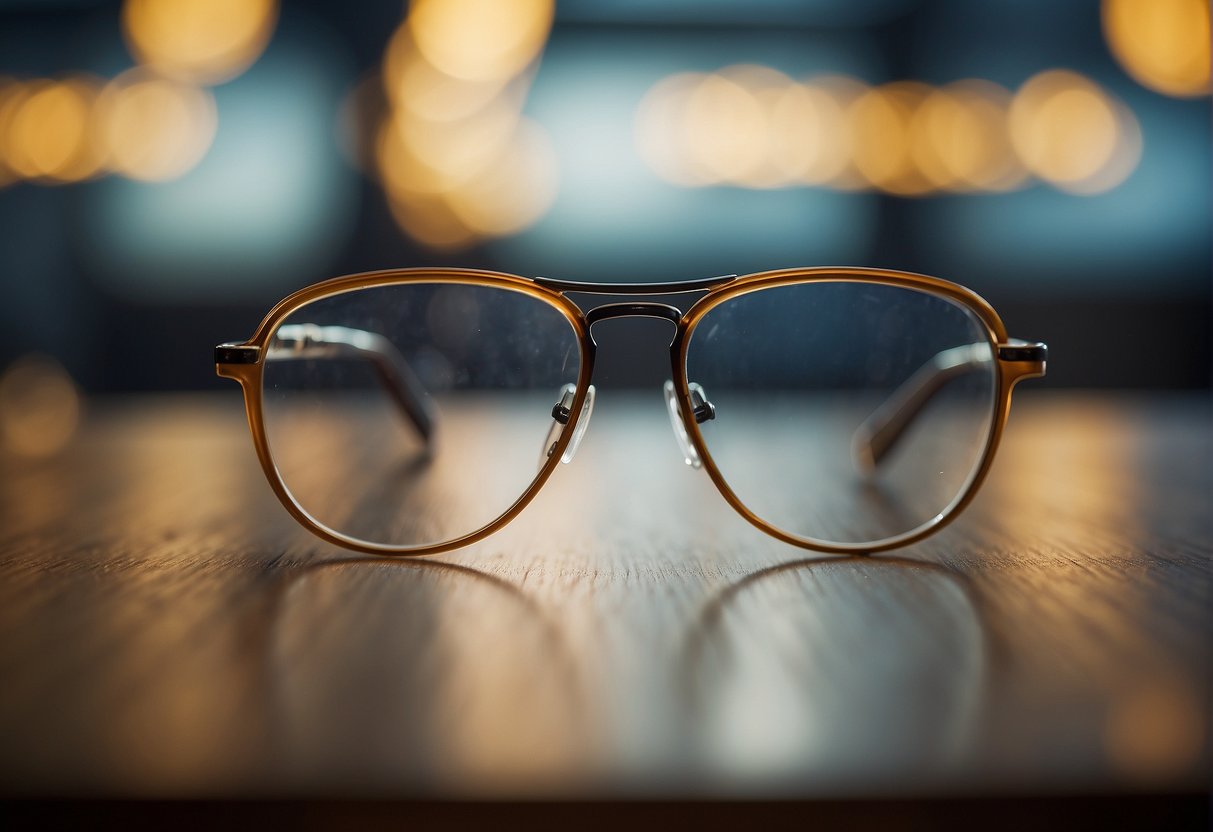
Every pair of glasses is composed of several key components that collectively contribute to both functionality and comfort. The frame provides the structural foundation and comes in a multitude of shapes and sizes to fit different face shapes.
High-quality materials are employed to ensure durability and longevity while offering a comfortable fit. Lenses are the heart of the glasses, crafted with precision to correct a wide range of visual impairments. The temples, nose pads, and additional elements such as hinges and screws are vital for proper fit and ease of wear.
Key Takeaways
- Glasses are an integral tool for vision correction and eye protection, with a focus on style and personal expression.
- Understanding the structure and purpose of each part enhances informed choices when selecting eyewear.
- Comfort and functionality are key considerations in the design of various eyeglass components.
Frame Anatomy
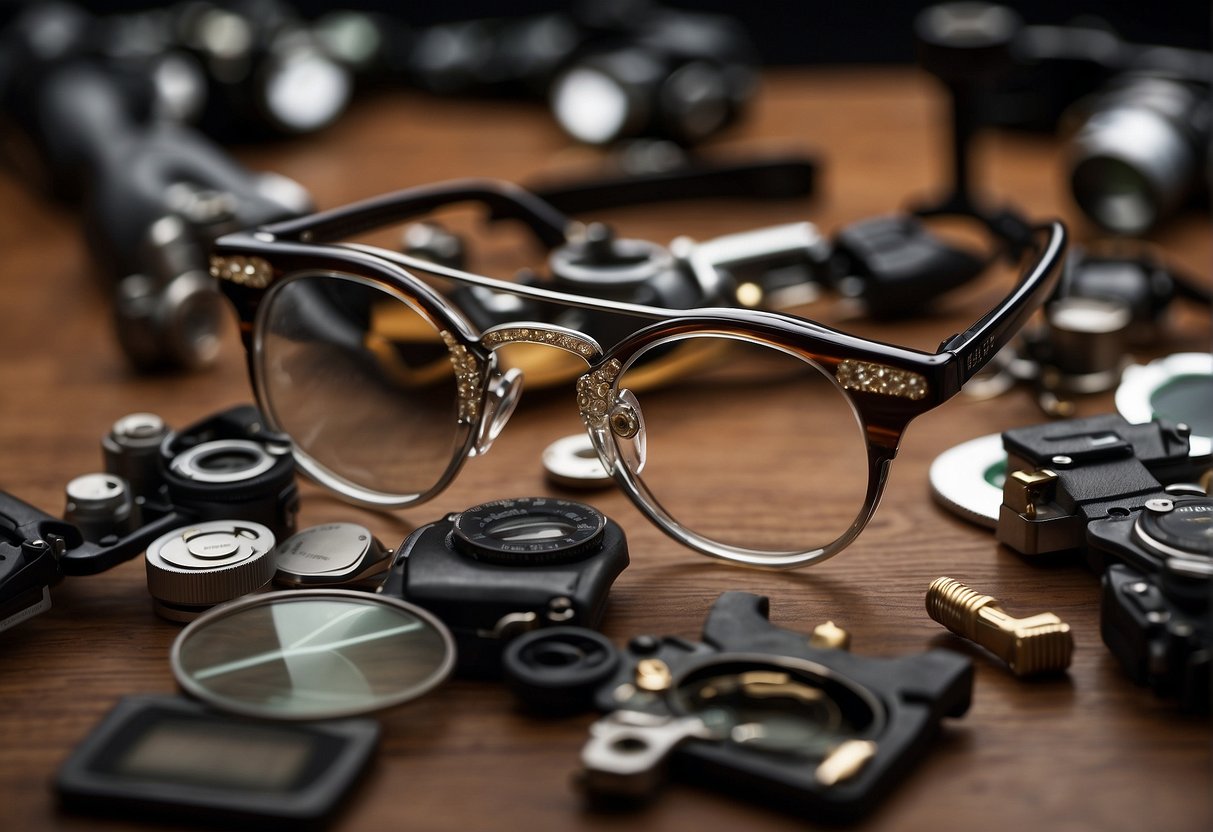
In our examination of glasses, the frame plays a crucial role in both functionality and aesthetics. We'll explore distinct aspects such as the frame front, bridge, and rim, to gain a comprehensive understanding of its complexity.
Frame Front
The Frame Front serves as the primary structure that holds the lenses and defines the appearance of the glasses. It typically consists of two eye wires or rims and the bridge that connects them. The material used here, whether acetate, metal, or a combination, greatly impacts the frame's durability and style.
- Eye Wire / Rim: Encircles the lens and can be of various shapes and sizes.
- Material: Acetate, metal (e.g., titanium, stainless steel), or mixed.
Bridge
The Bridge is the piece that rests over the nose and aids in balancing the glasses. It spans the area between the rims and comes in various styles, influencing the comfort and fit.
- Key Types:
- Saddle Bridge: Shaped to the contours of the nose, offering equal weight distribution.
- Nose Pads: Often found in metal frames, adjustable for a custom fit.
Rim
The term Rim refers explicitly to the part of the glasses that encircles and supports the lenses. The design options for the rim are numerous, affecting not just the look of the eyewear but also its weight and comfort level.
- Design Variations:
- Full-Rim: Completely encases lens edges, providing great lens protection.
- Semi-Rimless: Lens is partially exposed, reducing frame weight.
- Rimless: No rim surrounds the lens, for a minimalistic appearance.
Temple Components
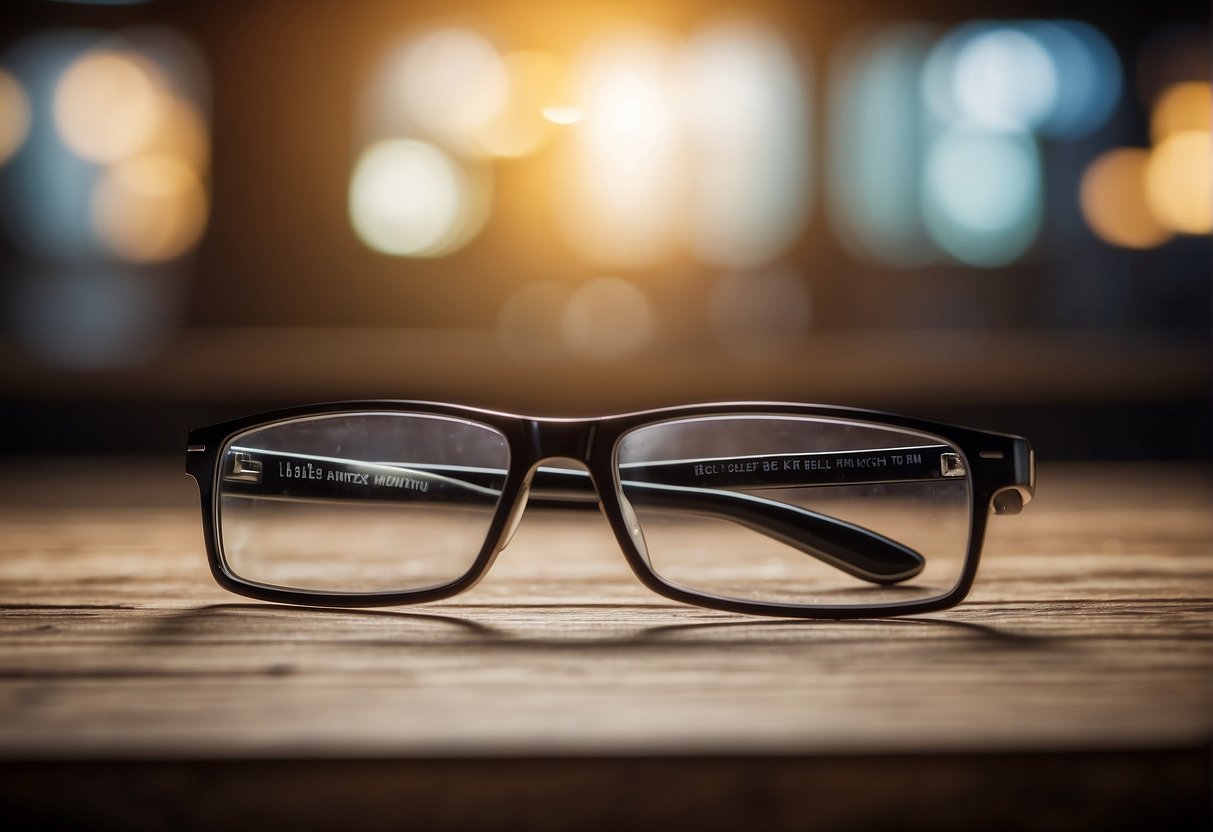
The temple components of glasses are essential for comfort and functionality. They consist of the temple arms, hinges, and end pieces, each playing a key role in the structure and fit of eyewear.
Temple Arms
Temple arms, also known as the sides of glasses, are crucial for maintaining the balance and securing the fit of the pair on the wearer. These elongated parts extend over the ears to hold the glasses in place. They come in various lengths and are often adjustable:
- Materials: Commonly made from metal, plastic, or a combination.
- Adjustability: Many have a bend near the end that rests on the ear to provide a comfortable and secure fit.
Hinges
Hinges connect the temple arms to the front frame of the glasses, allowing the arms to fold inwards for storage. Their design and construction are vital for the durability and ease of use of the glasses:
- Spring Hinges: Allow the arms to flex outward, reducing the likelihood of breakage.
- Standard Hinges: Usually consist of a series of screws and barrels that provide a simple pivoting function.
End Pieces
End pieces are the small parts located at the outer edge of the front frame, to which the hinges and temple arms are attached. They serve both a structural and an aesthetic function:
- Construction: Typically integrated into the frame's design, matching its material.
- Decoration: Sometimes embellished to enhance the overall style of the glasses.
Lens Features
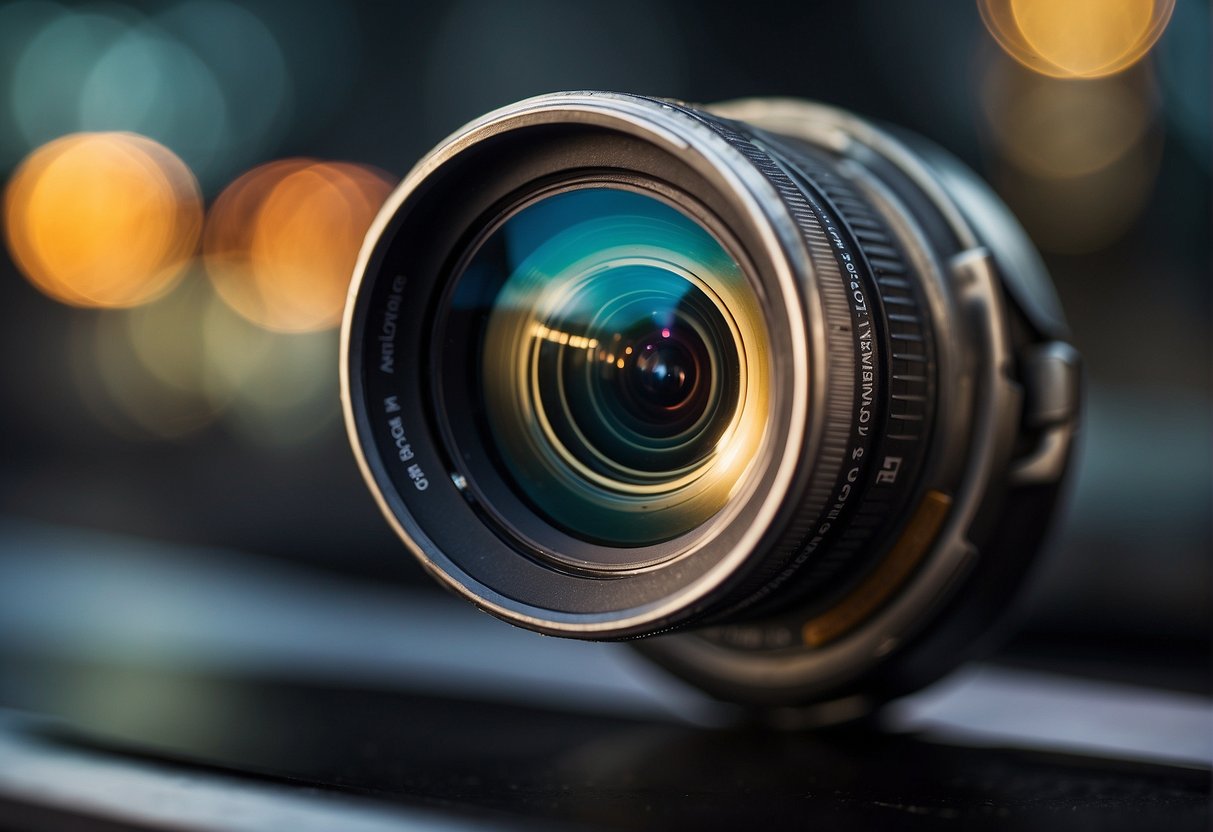
We understand that the lenses are pivotal components of both eyeglasses and sunglasses. In this section, we explore the different aspects that define the functionality and aesthetics of lenses: their material, shape, and coating.
Lens Material
The material used for lenses impacts their durability, clarity, and weight. We can categorize the most common lens materials into two groups:
- Glass: Offers excellent clarity and is scratch-resistant but is heavier and more prone to shattering.
- Plastic (including polycarbonate and CR-39): Lightweight, more impact-resistant than glass, and can be treated to provide better scratch resistance.
Lens Shape
The shape of a lens is crucial as it determines the corrective properties and how they fit into frames. We distinguish the common shapes using a simplistic approach:
- Spherical: Curves are the same across the lens, providing uniform vision correction.
- Aspheric: Flatter and thinner, reducing distortions and weight, which is ideal for stronger prescriptions.
Lens Coating
Coatings enhance lens performance and longevity through various treatments. We'll discuss some of the primary types of coatings:
- Anti-reflective (AR): Reduces glare and reflections, improving visual clarity and reducing eye strain.
- Scratch-resistant: Extends the life of lenses by mitigating damage from everyday use.
- UV-blocking: Crucial for sunglasses, it protects the eyes from harmful ultraviolet rays.
- Polarized: Specifically for sunglasses, it reduces glare from reflective surfaces, which is beneficial for driving and water activities.
Nose Pads and Support
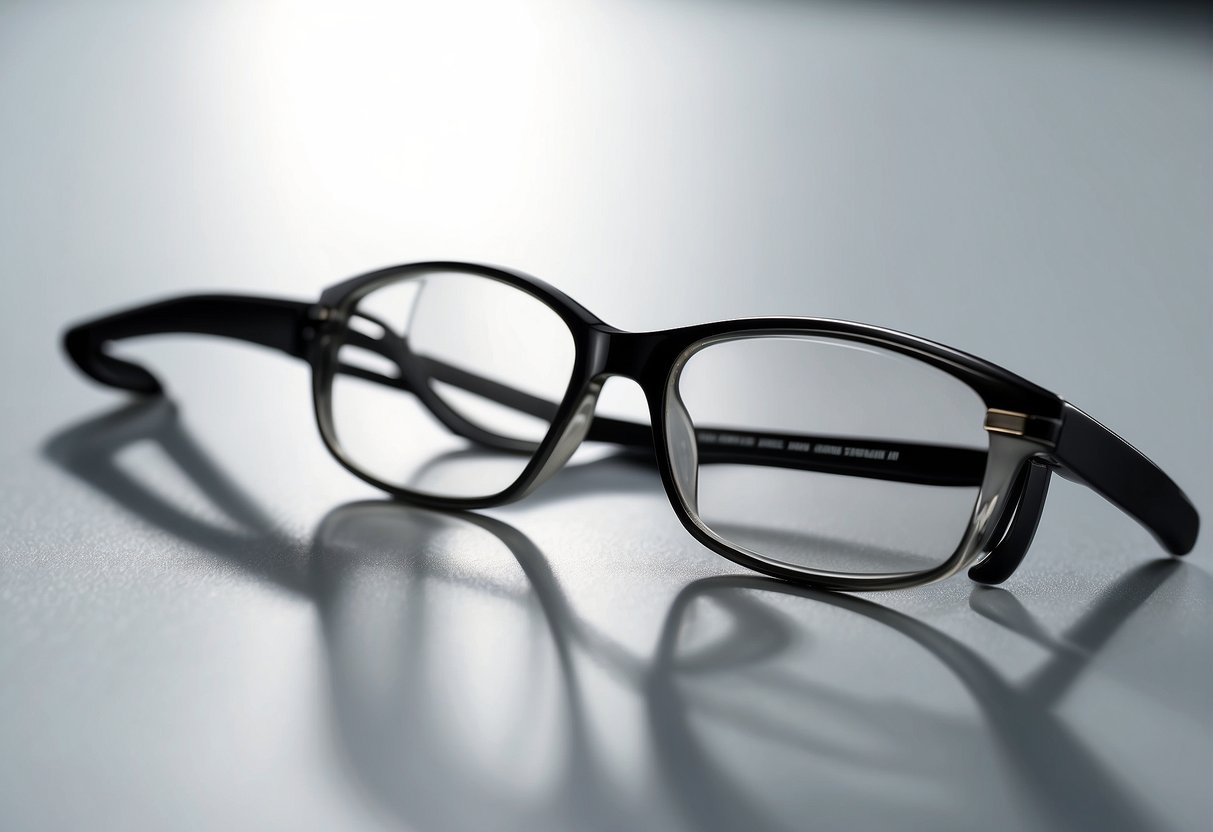
Nose pads are critical components in ensuring that eyeglasses fit comfortably and rest securely on the wearer's face. Our focus is on the two main aspects of nose pads: the arms providing the framework and the actual pads that make contact with the skin.
Nose Pad Arms
Nose pad arms, or guard arms, are the metal or plastic extensions connected to the main frame of the eyeglasses. These arms allow us to adjust the distance between the nose pads and, consequently, tailor the fit of the glasses to the unique contours of our nose. Typically constructed from durable materials, they serve as the foundational support for the nose pads.
- Materials Used:
- Metal
- Plastic
- Adjustability Factors:
- Width
- Angle
- Height
Pad Attachment
The pads themselves are attached to these arms, usually via a small screw or snap-fit mechanism. We find that they play a pivotal role in how glasses settle on the bridge of the nose, distributing weight evenly and preventing slippage. Most pads are made of silicone or soft polymer for comfort and may vary in shape to accommodate different nose shapes.
- Common Materials:
- Silicone
- Soft Polymer
- Attachment Methods:
- Screw-in
- Snap-on
- Shapes Available:
- Round
- Teardrop
- Oval
Additional Elements
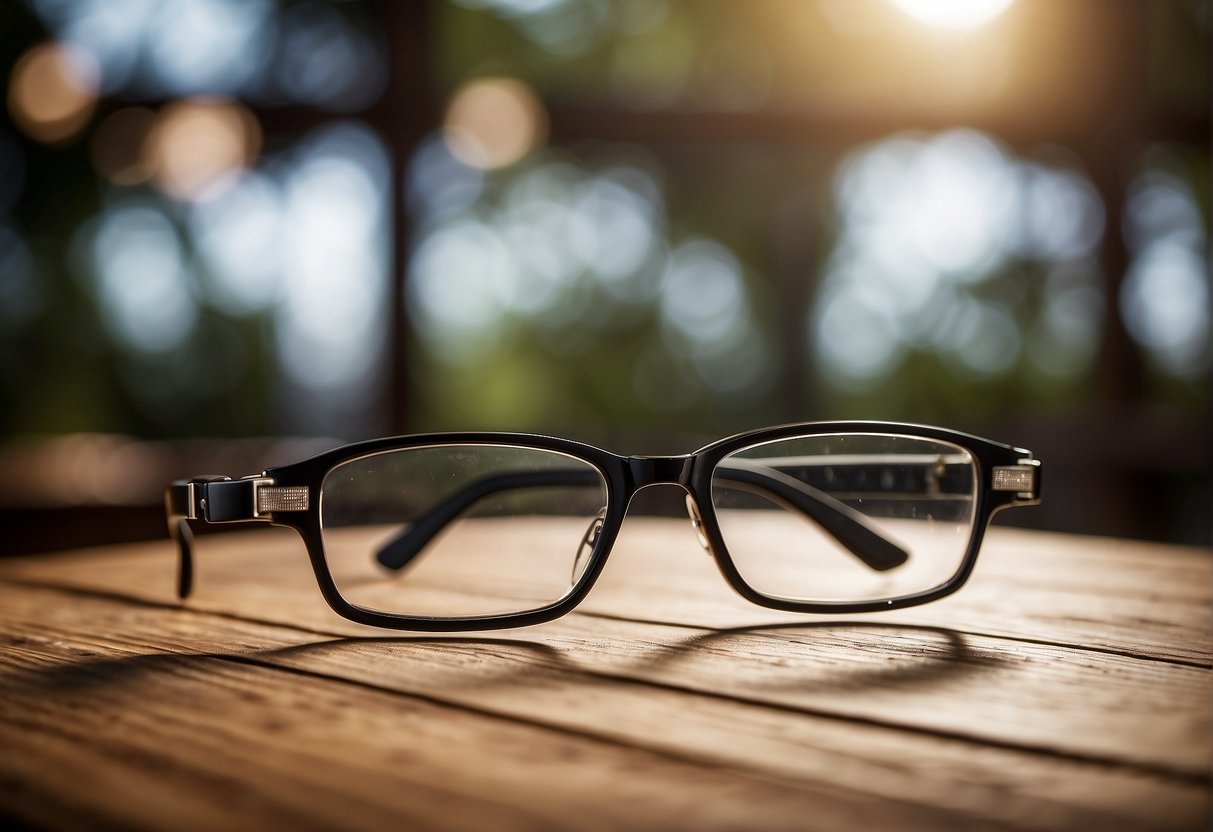
In addition to the primary components, glasses include smaller yet crucial parts that ensure functionality and aesthetics. We will examine the specifics of screws and decorations, which are instrumental in maintaining the integrity and enhancing the appearance of glasses.
Screws
Screws are pivotal in securing the various pieces of glasses together. These small metal components keep the frame intact and allow for the hinges to operate smoothly. Glasses typically contain:
- Hinge Screws: Connect the temple to the frame, allowing for the folding action.
- Nose Pad Screws: Attach adjustable nose pads to the frame, which are essential for a comfortable fit.
| Type | Material | Purpose |
|---|---|---|
| Hinge Screws | Stainless steel, nickel, or titanium | To fasten temples to the frame front |
| Nose Pad Screws | Stainless steel or nickel | To attach and adjust nose pads |
Decorations
Decorations on glasses range from functional to purely aesthetic. They can be found on the temples and the front of the frame:
- Logos or Branding: Often embossed or inlaid on the temples to identify the brand.
- Accent Details: Could include gems, unique patterns, or color inlays to enhance style.
| Location | Type | Material | Function |
|---|---|---|---|
| Temples | Branding | Metal, plastic | Brand identification |
| Temples/Front | Accent Details | Metals, gems, enamels | Personalization and style |
What Do The Numbers On My Glasses Mean?
Click on the image to learn more...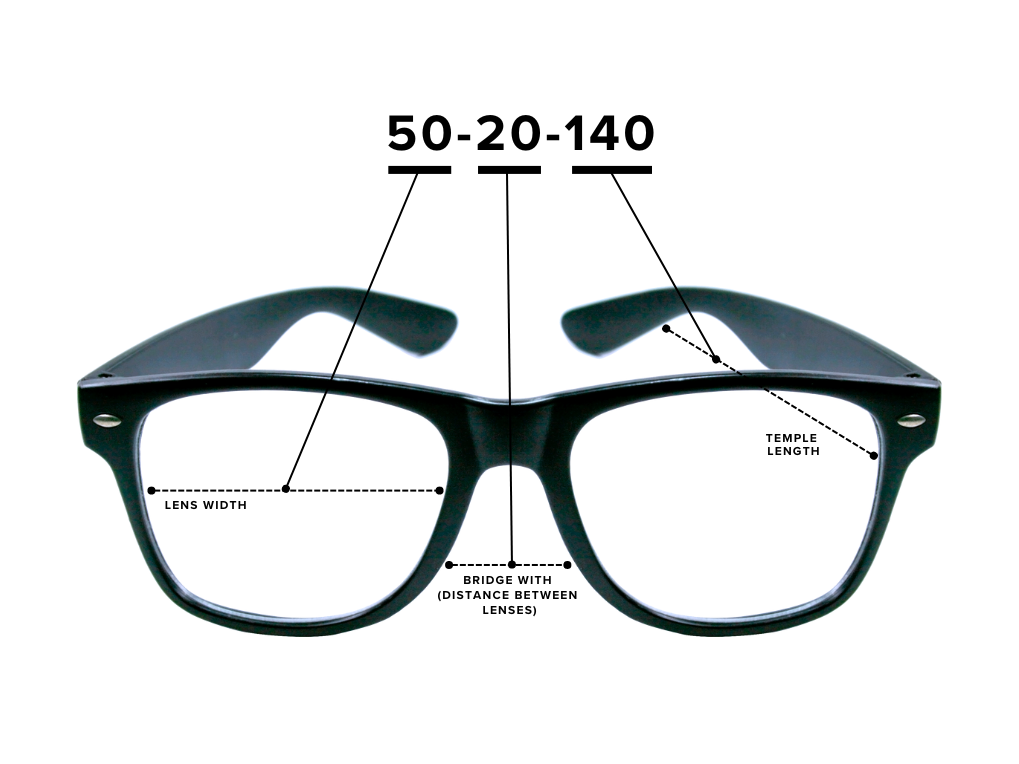
Frequently Asked Questions
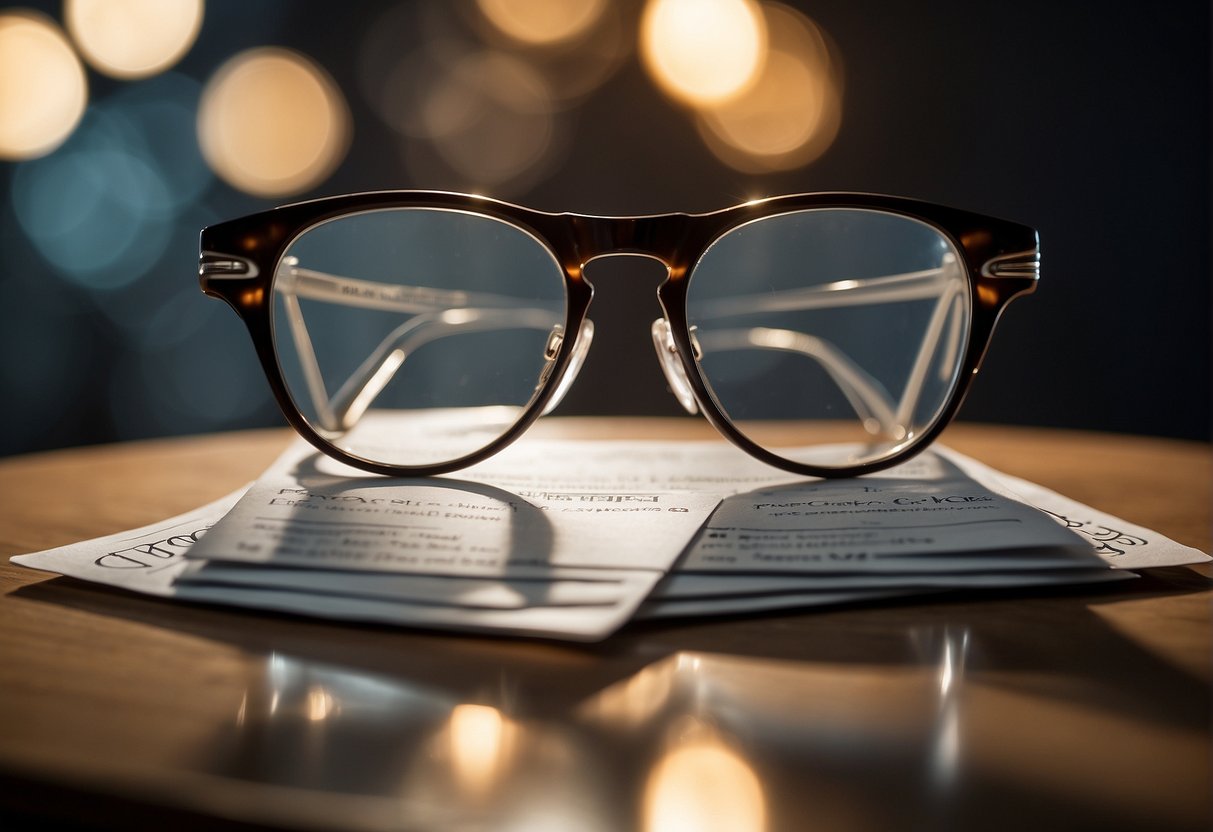
In this section, we address common inquiries about the specific parts of glasses to help clarify their terminology and differences.
What is the term for the components of glasses that extend over the ears?
The parts of glasses that extend over and hook behind the ears are known as temples or arms.
What is the correct terminology for the part of eyeglasses that rest on the nose?
The section of eyeglasses that rests on the nose is called the nose pads or bridge.
How do you refer to the hinged sections that allow glasses to fold?
The hinged sections that enable glasses to fold are called the barrel hinges.
What are the various styles of the horizontal bars on eyeglasses called?
The horizontal bars across the top of eyeglasses are referred to as the browline.
In glasses, what are the pieces called that connect the lenses to the temples?
The components that link the lenses to the temples are the end pieces.
What is the name of the part of the glasses that supports the lenses on the face?
The part of the glasses designed to support the lenses on the face is known as the frame front or rims.

